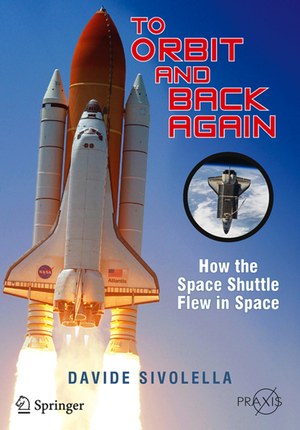Review: To Orbit and Back Againby Jeff Foust
|
| To Orbit and Back Again has the endorsement of another former astronaut, Story Musgrave, who wrote the book’s foreword. “It is massively detailed and massively technical, so isn’t for the faint of heart, but that is okay.” |
Sivolella devotes much of the book to an examination of the various major subsystems of the orbiter: avionics, structures, thermal protection, and the main engines and other thrusters, among other topics, as well as the external tank and solid rocket boosters. The last few chapters look at the flight operations of the Space Shuttle itself during launch, in orbit, and landing. There is, as promised, considerable technical information about the shuttle’s systems, far more than the general reader might expect, or want. A sample sentence from the avionics chapter: “For example, the GPC set running PASS GNC would perform a bus masking on the PL data buses on-orbit, when the PL buses were assigned to the SM GPC.”
However, the book also includes some anecdotes from the engineers who designed the shuttle and the astronauts who flew them. Just a paragraph after the above sentence about the orbiter’s computers, Sivolella includes an anecdote from former astronaut Brewster Shaw, who was pilot on STS-9, which suffered two failed computers as the crew was preparing to deorbit at the end of its mission, a problem traced to loose bits of solder in those computers.
To Orbit and Back Again has the endorsement of another former astronaut, Story Musgrave, who wrote the book’s foreword. “It is massively detailed and massively technical, so isn’t for the faint of heart, but that is okay because it is as I have referred to it, an exposition; it is fully explanative all the way through,” Musgrave writes, adding that the book could have served as a useful textbook for him as he prepared for his six shuttle flights. And that is a pretty good assessment of the book: it is not for the casual reader looking for a basic history or overview of the shuttle program, but someone seeking to go beyond the basics of the engineering of the shuttle. The Space Shuttles may never fly again, but this book provides a good reminder of what made those launches possible.
